How to properly plant raspberries in spring, summer and autumn
If you do not care for the raspberries, the yield will decrease every year. Mandatory procedures include pruning, winter preparation, rejuvenation and transplantation. Raspberries are planted in order to enlarge the curtain or so that the plant remains viable and fructifies well.
However, even with proper care, after 5 years, the shrub begins to produce fewer berries. This means that the plant has squeezed out all the nutrients from the soil and needs to be transplanted to a new place. It makes no sense to transfer an old bush, and it is expensive to buy seedlings. Therefore, the most logical thing is to plant raspberries. This must be done correctly, otherwise the growth will die.
How to choose the right site
Lighting. Raspberry is a thermophilic berry. It grows best in sunny areas with diffused sun rays. If a shadow constantly falls on the shrub, the fruits rot. A fence or trees will hide the raspberry tree from the gusts of wind. The main thing is that they do not block the access to light.
pH. A neutral or slightly acidic soil is ideal. Overdried or damp soil is not good. The distance from the groundwater to the roots should be at least a few meters.
Crop rotation rules. The place is not suitable if there was an old raspberry tree on it. The fact is that fungal microorganisms remain in the soil, which are dangerous for new seedlings. Also bad predecessors:
- fruit trees,
- Strawberry,
- tomatoes,
- potatoes.
They suffer from the same pests and diseases as raspberries.
An area where legumes, flowers, onions and herbs used to be is ideal.
Top dressing. Dig up the garden before seedling, get rid of the weeds and add fertilizer. Humus, superphosphate, or wood ash will do. Regardless of the planting method you choose, avoid using fertilizers that contain nitrogen.
When is the best time to plant raspberries
Autumn is the optimal time for planting raspberries:
- the fruiting season is over;
- air humidity is increased;
- the shoots have enough precipitation, watering is not needed;
- nutrients rush to the rhizome.
You can plant raspberries in August, September and even October. It all depends on the climatic characteristics of the region. The main thing is to do this 3 weeks before the frost starts - follow the weather forecast. Lateral roots must form before snow falls.
Important
Only residents of the northern regions should give up autumn seedlings because of the early onset of cold weather.
Summer breeding raspberry
In the summer, transplanting and reproduction is also quite feasible, but it must be borne in mind that the sprouts will need more watering. Usually this season, seedlings from the greenhouse are moved to the site - to avoid the contrast of conditions.
Advice
A month before moving young shoots to the main place, dig up the area with grass so that it has time to rot.
Features of landing in summer:
- start the procedure from the second half of June, but not in July, since the intense heat will dry out the plants;
- in the southern regions, raspberries will need shading;
- cover the root collar with about 2 cm of soil so that the heat does not dry out the sprouts;
- the optimal temperature is not higher than 22 degrees, respectively, morning or evening hours are preferred;
- water the cuttings abundantly after planting (you will need about 7 liters of water);
- it is strongly recommended to mulch the soil with peat, rabbit dung or straw to avoid crusting on the soil and rapid evaporation of moisture.
Reproduction by green offspring
In the spring, raspberries are planted with young shoots. They appear on their own, sprouting from the maternal root and starting to form their own lateral roots. When the daughters are strong enough (they usually stretch up to 10-20 cm in height), they are sent to a "kindergarten", that is. to a special bed for young growth.
How to proceed:
- Moisten the soil.
- Step back 40 cm from the center of the mother bush.
- Mark the strongest shoots in this radius.
- Dig them out with a sufficient lump of soil on the roots.
- Move to a nursery and look after carefully.
- Move to the main growing area in autumn.
Resettlement by root cuttings
This method is good because it is not tied to the state of the green part of the raspberry tree. Even if the caterpillars have eaten all the foliage, root cuttings will work and produce young shoots. The method works in spring and autumn.
Instructions:
- Dig out the subordinate clause, i.e. the root branching off from the mother bush (distance from the center is the same 40 cm). The minimum thickness of a suitable specimen is 2 mm.
- Find buds or stems that have already hatched.
- Cut into pieces of 8-10 cm, each of which will have 2 buds. Be sure to leave all the small roots trimming the main shaft.
- Lay in prepared trenches, about 7 cm deep. Gaps are optional.
- Sprinkle with earth and water.
Rooting green cuttings
In summer, elite varieties of raspberries are propagated by green stems. They are harvested in May, during the thinning of raspberries:
- It is better to prepare in the morning when the plant is saturated with moisture.
- Choose cuttings at least 20 cm high and only cut from the bottom of the plant.
- Remove the top bud from the stem.
- Divide the shoot into sections so that each has 2 internodes. Don't leave more than one sheet of paper.
Next, you need to ensure that the roots appear, gardeners use two approaches.
Option 1:
- Place the base of the cuttings in a stimulant solution or dip in growth powder for one day.
- Prepare a container with a substrate of peat, humus and sand and plant a stalk in it.
- Water liberally and place in a greenhouse.
- Spray the stem with warm water regularly for several weeks.
Option 2:
- Make shallow longitudinal grooves on the lower internode, spaced every 2 mm.
- Treat the cutting with a root growth stimulant.
- After the roots appear, place it in a container with earth.
Planting lignified shoots
In autumn, choose ripe raspberry stems without signs of disease for planting. They are highly adaptable and grow quickly. But in order to plant raspberries correctly, follow the process technology:
- Do not dig up the scion too early, wait until the buds form.
- Examine the seedlings for diseases. Give preference to plants with a developed root system.
- Before placing the raspberries in a hole or trench, moisten the roots with a solution of clay and mullein.
- Water the plant.
- Compact and mulch the soil with straw, peat, humus or dry leaves. A layer of organic matter will protect against weeds and retain moisture.
How to plant raspberries - schemes and types of supports
Saplings are placed at a distance of at least 50 cm from each other. This is to ensure that they receive adequate nutrition. If the bushes are cramped, the harvest will be small. In this case, either the usual method with holes or trench is used.
Trench way
The method allows you to save time and efficiently use the territory:
- Dig the vegetable garden and dig a trench 50 cm wide and at least 60 cm deep.
- Limit the walls with sheets of slate, iron or plywood - this will limit the curtain and prevent neighboring beds from filling up.
- Pour 10 cm of gravel or river sand at the bottom.
- Cover with soil mixed with humus.
- Place the trenches no closer than a few meters to each other.
- Hammer in posts around the edges and pull the wire. The first row should rise 30-40 cm above the ground, the second - by 1 m, and the third - by 1.5 m.
- Tie the young shoots to a wire as they grow. This is done so that the stems do not lie on the ground. This method protects the young from rotting and strong winds.
Experts believe that the trench furrows are best positioned from north to south. This will give raspberries access to the sun in the morning.
Lunar method
The holes are dug about 50 cm in diameter, 40 cm deep and 1 m apart.
A mixture of ash, sulfate and humus is poured onto the bottom of the pits. All this is covered with a 15 cm layer of earth. This fertilizer is rich in silicon, potassium, phosphorus and iron.
Important
Although ash repels pests and inhibits the growth of pathogenic bacteria, it must be used with extreme caution. Otherwise, the alkali content in the soil will increase, which will negatively affect the fragile seedlings.
Place the root collar at soil level. If you bury it too deep, young shoots will not break through the soil layer. This method is suitable for different varieties, including remontant (late) ones.
It doesn't matter if raspberries were planted in summer or fall - with proper care they will grow healthy. Water and feed plants in time, remove dead branches, and carry out sanitary pruning. Then raspberries will delight you with a rich harvest and sweet berries.
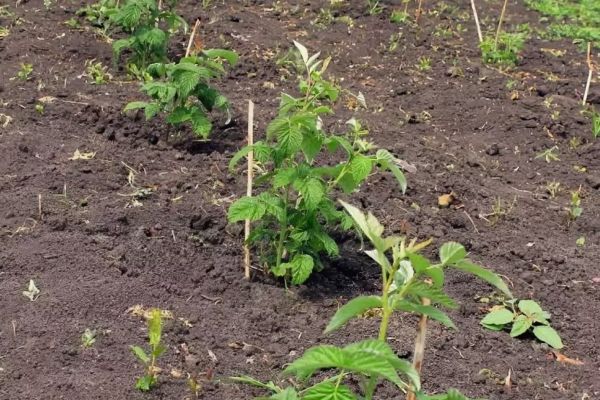
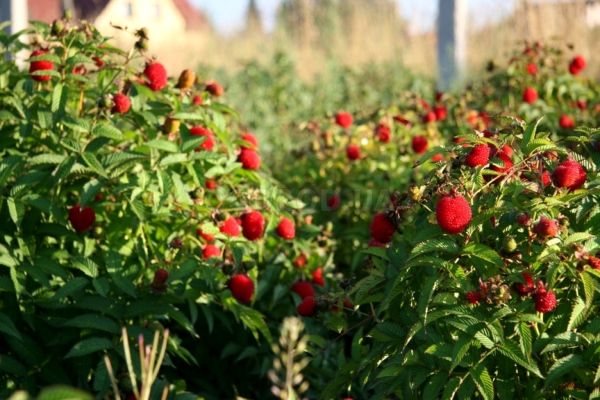

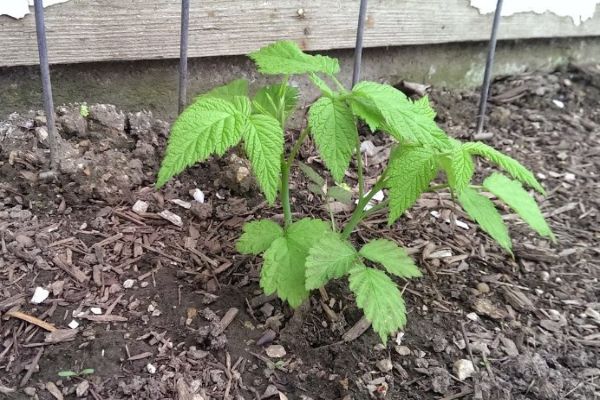
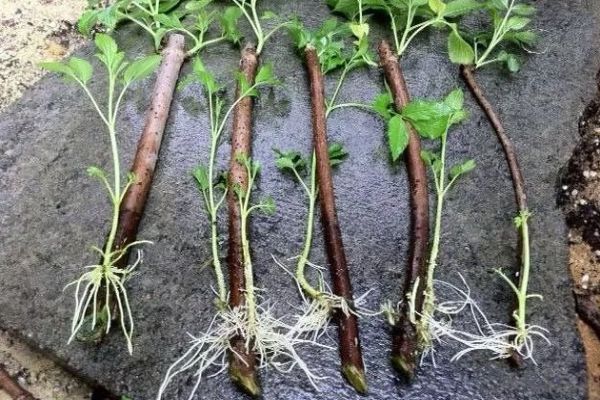

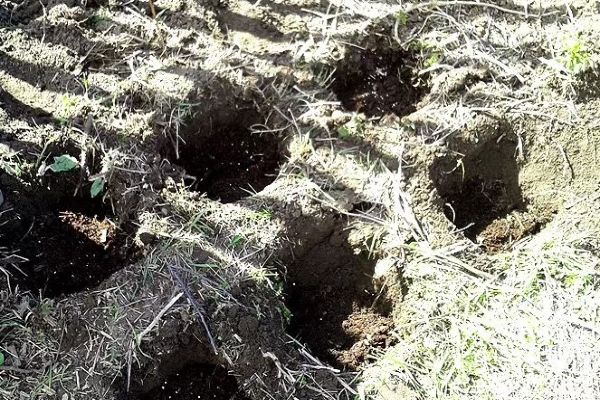
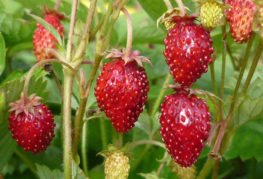
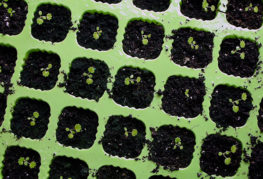
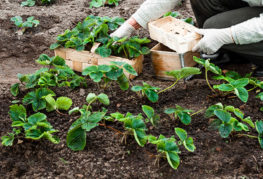

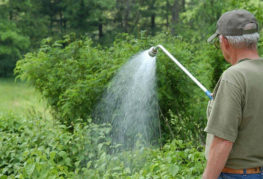
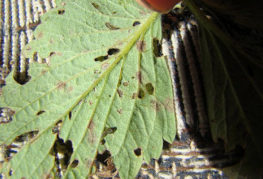
and will be published shortly.